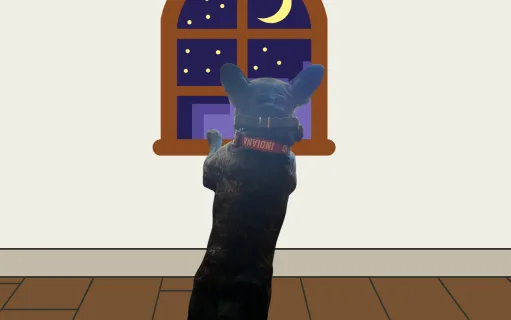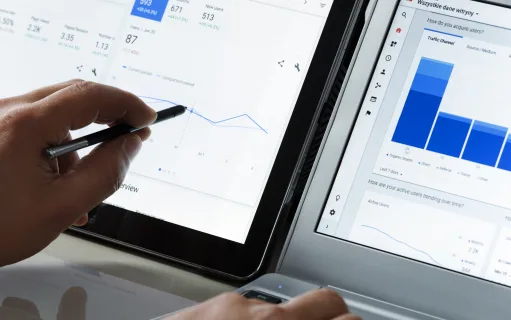How Broken Links Can Harm Your Website’s SEO
Broken links might appear harmless at first glance, but they can have a serious impact on your website’s search engine rankings and the overall experience you deliver to visitors. When users encounter non-functioning pages, frustration rises and trust declines, while search engines penalize your site’s visibility. At NUVEW Web Solutions, we’re dedicated to improving both performance and user satisfaction. Our team specializes in identifying and resolving broken links, along with a full range of technical website optimizations, to help your business achieve higher search rankings and keep visitors engaged.
Here’s a quick look at how broken links can negatively impact your SEO:
- Hinder Google’s ability to crawl and index your website
- Increase bounce rates as frustrated visitors leave your site
- Damage your site’s credibility and professional appearance
- Reduce the time visitors spend on your pages
- Lower your search engine rankings over time
What Are Broken Links and Why Should You Care?
A broken link, also called a dead link, occurs when a hyperlink no longer points to a valid destination. When users click these links, they encounter error messages instead of the content they expected. This creates a poor user experience that Google increasingly penalizes in its ranking algorithm.
Google’s crawlers navigate your website by following links from page to page. When they encounter broken links, they can’t properly index your content. This means even your best pages might not appear in search results simply because Google couldn’t reach them.
Why Do Broken Links Hurt SEO?
Impact on Crawlability
Search engines use automated bots to discover and index web pages. When these bots encounter broken links, they hit dead ends. This prevents them from accessing potentially valuable content on your site. If Google can’t crawl your pages, it can’t rank them.
Damaged User Experience
Nothing frustrates visitors more than clicking a link only to land on an error page. Many users will simply leave your site rather than search for an alternative. This increases your bounce rate, a key metric Google uses to evaluate website quality.
Wasted Link Equity
Each link on your website passes “link juice” or authority to other pages. Broken links waste this valuable equity, preventing it from strengthening your internal linking structure. Over time, this weakens your entire site’s SEO performance.
What Causes Broken Links?
Understanding why links break helps you prevent future issues:
- Deleted or moved pages: Content removed without proper redirects leaves broken links throughout your site
- Changed URLs: Updating page URLs without forwarding the old ones creates dead ends
- Mistyped URLs: Simple typos when creating internal links lead to 404 errors
- Removed external content: Links to deleted videos, resources or third-party pages that no longer exist
- Expired offers: Landing pages or promotional content taken down after campaigns end
- Website migrations: Moving to a new platform or redesigning without mapping old URLs to new ones
How Can I Find Broken Links on My Website?
Regular monitoring catches broken links before they harm your SEO. Here are effective tools and methods:
Free Broken Link Checkers
- Ahrefs Broken Link Checker: Provides comprehensive reports showing exactly which links need attention
- Screaming Frog: Crawls up to 500 pages for free, identifying all broken links and their locations
- Dead Link Checker: Scans your entire site quickly and highlights problem areas
- Broken Link Check: Offers free scanning for up to 3,000 pages
Google Search Console Method
Google Search Console offers built-in broken link detection. Access your account, navigate to the “Crawl Errors” section and review any 404 errors Google discovered. This tool shows you exactly what Google sees when crawling your site.
For smaller websites, check for broken links monthly. Larger sites benefit from weekly checks, prioritizing high-traffic pages first.
How Do I Fix Broken Links?
Once you’ve identified broken links, take these steps to resolve them:
Correct the URL
If you control the link, simply update it to point to the correct destination. This works for internal links where you mistyped a URL or forgot to update links after changing page addresses.
Implement 301 Redirects
When you’ve permanently moved or deleted content, create a 301 redirect that automatically sends visitors to a relevant alternative page. This preserves link equity and maintains a seamless user experience. Most website platforms offer simple redirect tools.
Create a Custom 404 Page
Design a branded 404 error page that reflects your company’s personality while offering helpful navigation options. Include links to your homepage, popular pages, a search bar and contact information. This keeps visitors engaged even when they encounter an error.
Restore Important Content
Sometimes the best solution is to bring back the original page. If you deleted valuable content that receives regular traffic or has quality backlinks, consider restoring it rather than redirecting elsewhere.
Take Control of Your Website’s SEO Performance
Broken links represent easily preventable damage to your search rankings and user experience. Regular monitoring and prompt fixes maintain your site’s health and protect your investment in SEO. At NUVEW Web Solutions, we conduct thorough technical audits that identify and resolve issues as part of our comprehensive SEO campaigns. Our team uses proven strategies to keep your website performing at its best. We’re committed to your long-term success with ongoing support that ensures your site remains optimized as it grows. Contact us today, and let our skilled professionals help you create a seamless user experience that drives results.








